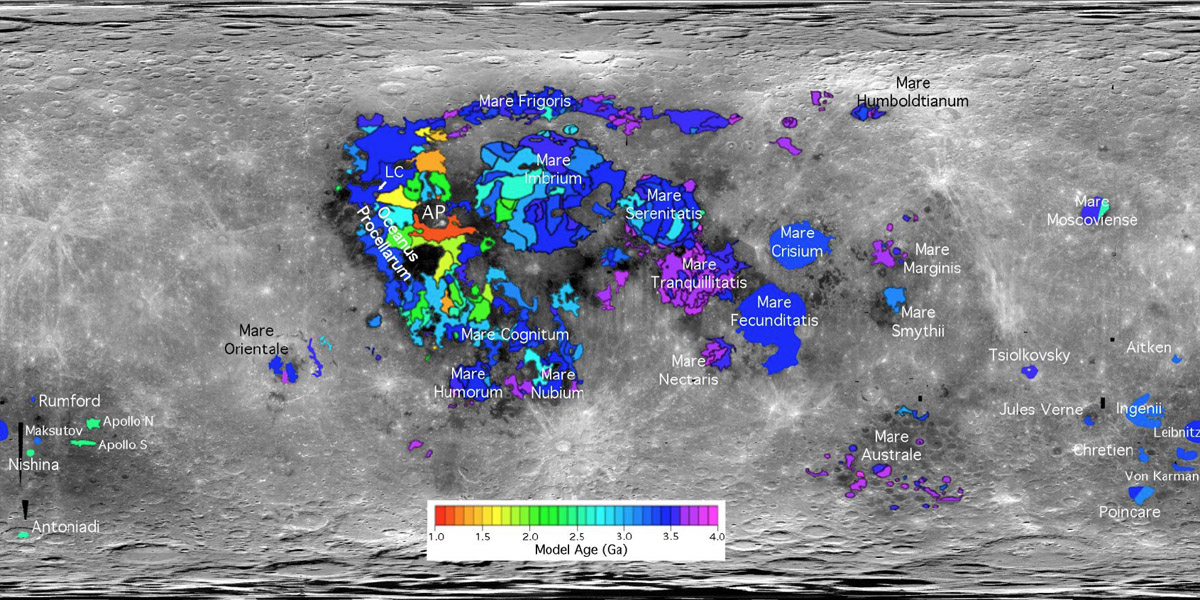Difference between revisions of "May 4, 2010"
| Line 4: | Line 4: | ||
<!-- ws:start:WikiTextHeadingRule:1:<h1> --> | <!-- ws:start:WikiTextHeadingRule:1:<h1> --> | ||
<!-- ws:start:WikiTextLocalImageRule:16:<img src="/file/view/LPOD-May4-10.jpg/139196435/LPOD-May4-10.jpg" alt="" title="" /> -->[[File:LPOD-May4-10.jpg|LPOD-May4-10.jpg]]<!-- ws:end:WikiTextLocalImageRule:16 --><br /> | <!-- ws:start:WikiTextLocalImageRule:16:<img src="/file/view/LPOD-May4-10.jpg/139196435/LPOD-May4-10.jpg" alt="" title="" /> -->[[File:LPOD-May4-10.jpg|LPOD-May4-10.jpg]]<!-- ws:end:WikiTextLocalImageRule:16 --><br /> | ||
| − | <em>image from [http://www.lpi.usra.edu/meetings/lpsc2010/pdf/1486.pdf </em><br /> | + | <em>image from [http://www.lpi.usra.edu/meetings/lpsc2010/pdf/1486.pdf Eldridge and others (2010)]</em><br /> |
<br /> | <br /> | ||
One of the most important pieces of geologic information about a lunar material is its age.<br /> | One of the most important pieces of geologic information about a lunar material is its age.<br /> | ||
| Line 20: | Line 20: | ||
seen from Earth, and the youngest are in the west, in Procellarum. No one is sure why this is,<br /> | seen from Earth, and the youngest are in the west, in Procellarum. No one is sure why this is,<br /> | ||
but it is probably related to the occurrence of greatest radioactivity containing rocks - the<br /> | but it is probably related to the occurrence of greatest radioactivity containing rocks - the<br /> | ||
| − | + | [http://www.lpod.org/?m=20070219 Procellarum KREEP Terrain].<br /> | |
<br /> | <br /> | ||
| − | <em>[mailto:tychocrater@yahoo.com </em><br /> | + | <em>[mailto:tychocrater@yahoo.com Chuck Wood]</em><br /> |
<br /> | <br /> | ||
<br /> | <br /> | ||
<hr /> | <hr /> | ||
| − | <div>You can support LPOD when you buy any book from Amazon thru | + | <div>You can support LPOD when you buy any book from Amazon thru [http://www.lpod.org/?page_id=591 LPOD!]<br /> |
</div> | </div> | ||
Revision as of 22:25, 2 January 2015
Not Much Red

image from Eldridge and others (2010)
One of the most important pieces of geologic information about a lunar material is its age.
The best way to determine when a rock was formed is to analyze it in a laboratory, but we
have only been able to do that for a few places on the lunar surface, where the Apollo
astronauts and Soviet automated sample return missions brought pieces of rock to the
Earth. The ages from those nine locations have been critical, however, for they allowed the
calibration of age dating estimates derived from crater counting. An area with more craters
is older than a region with few, and the radiometric age dating of samples ties together
absolute ages with numbers of craters per square kilometer. This map, compiled from work
of Harry Heisinger and a few other crater counters is the best information currently available
on the distribution of ages of lunar lava flows. The first thing that is evident is that each maria
did not erupt all at one time, for except for Crisium and Fecunditatis each mare has lava flows
of different ages. In general, the oldest lavas are in the eastern half of the part of the Moon
seen from Earth, and the youngest are in the west, in Procellarum. No one is sure why this is,
but it is probably related to the occurrence of greatest radioactivity containing rocks - the
Procellarum KREEP Terrain.
Chuck Wood
COMMENTS?
Click on this icon File:PostIcon.jpg at the upper right to post a comment.



